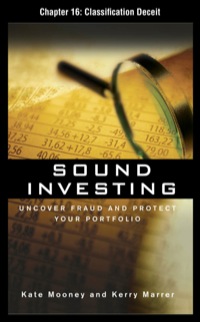Question
you have been provided with accounting research tools. Use them to answer the following multiple choice questions. After you make your choice, tell me what
you have been provided with accounting research tools. Use them to answer the following multiple choice questions. After you make your choice, tell me what theory you are basing your answer on, or what part of the codification applies to the question. As you may have guessed, this is an open book quiz. Answer Sheet 1. An entity reports the cumulative effect on earnings of prior years as an adjustment of the beginning balance of retained earnings for the first period presented. For which of the following accounting changes was this adjustment made? A) A change in an estimate effected by a change in accounting principle. B) A change from LIFO to FIFO. C) A change in the estimated salvage value of a depreciable asset. D) A change in the method of depreciation from sum-of-the-years-digits to straight-line. 2. At the beginning of the current year, Avery Co. made a justifiable change from FIFO to weighted average. During a period of rising prices, the result was a $200,000 decrease in the beginning inventory. If the tax rate applicable at all times was 25% and Avery reports single-period statements only, the cumulative effect of the change must be reported in the statement of A) Income as a $150,000 cumulative effect of an accounting change. B) Income as a $200,000 cumulative effect of an accounting change. C) Retained earnings as a $150,000 debit to the beginning balance. D) Retained earnings as a $200,000 debit to the beginning balance. 3. Which of the following describes a change in reporting entity? A) An entity acquires a subsidiary. B) A manufacturer expands its market from regional to nationwide. C) An entity acquires additional shares of an investee and changes from the equity method of accounting to consolidation of the subsidiary. D) An entity presents consolidated or combined statements in place of statements of individual companies. 4. Omicron Co. made a justifiable change in its method of accounting for long-term contracts. The cumulative effect of this change in accounting principle should be reported in comparative financial statements A) Net of tax after discontinued operations. B) As a component of income from continuing operations. C) As an adjustment only of the beginning balance of retained earnings for the current period. D) By retrospective application if practicable. 5. In the preparation of single-period financial statements, an error correction related to a prior period must be A) Separately disclosed and deducted directly from operating income before determining current-period net income. B) Listed as the last item net of tax in determining current-period net income. C) Taken directly to the opening balance of retained earnings net of tax. D) Disclosed only in a note to the financial statements. 6. Under IFRS, changes in accounting estimates are viewed as A) Items of other comprehensive income. B) Errors in reported amounts in prior periods. C) Catch-up adjustments related to amounts reported in prior periods. D) Reassessments of current status and future benefits and obligations. 7. The requirements of GAAP relevant to accounting for income taxes are applicable to A) Federal income taxes only. B) Federal and state income taxes only. C) Domestic income taxes only. D) Federal, state, local, and foreign taxes based on income. 8. If receivables transferred with recourse qualify for derecognition, the proceeds from the transfer are A) Accounted for as a collateralized borrowing. B) Recorded at fair value for the assets obtained and liabilities incurred. C) Recorded at the historical cost of the assets obtained. D) Reduced by the fair value of the recourse obligation. 9. Income tax expense is equal to A) Taxable income multiplied by the applicable tax rate(s). B) Pretax income from continuing operations multiplied by the applicable tax rate(s). C) The sum of current tax expense and deferred tax expense. D) The difference between current tax expense and deferred tax expense. 10. Alex Co. has the following items listed in the asset section of its balance sheet. Which should be classified as a current asset? A) Investment in held-to-maturity securities. B) Prepaid insurance on a 3-year policy expiring within the year. C) Cash surrender value of life insurance policies. D) Cash to be used for sinking fund payments to retire long-term debt. 11. Foster Co. adjusted its allowance for uncollectible accounts at year end. The general ledger balances for the accounts receivable and the related allowance account were $1,000,000 and $40,000, respectively. Foster uses the percentage-of-receivables method to estimate its allowance for uncollectible accounts. Accounts receivable were estimated to be 5% uncollectible. What amount should Foster record as an adjustment to its allowance for uncollectible accounts at year end? A) $10,000 decrease. B) $10,000 increase. C) $50,000 decrease. D) $50,000 increase.
Step by Step Solution
There are 3 Steps involved in it
Step: 1

Get Instant Access to Expert-Tailored Solutions
See step-by-step solutions with expert insights and AI powered tools for academic success
Step: 2

Step: 3

Ace Your Homework with AI
Get the answers you need in no time with our AI-driven, step-by-step assistance
Get Started


